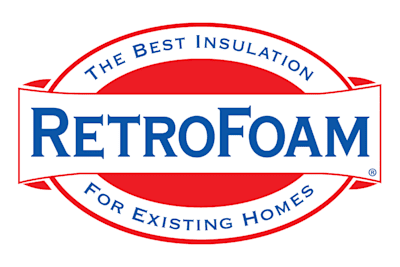What is Dew Point in Your Home and How to Measure It
home insulation | home insulation problems | foam university


You’ve probably heard the term “dew point” tossed around during your local weather forecast, often paired with words like muggy or sticky.
But here’s the thing – your home also has a dew point, and if you don’t keep it in check, it can lead to serious issues like condensation, mildew, and even mold growth.
So, what is dew point in your home, how can you measure it, and what should you do if it’s out of balance? Let’s break it all down.
What is Dew Point?
Simply put, dew point is the temperature at which moisture in the air turns into liquid water.
Think about grabbing an ice-cold can of soda from the cooler on a hot summer day. As it sits out in the heat, condensation quickly forms on the outside of the can. That’s dew point in action; The place where warm air meets a cold surface and creates water droplets.
Inside your home, dew point typically shows up in your walls and attic assemblies. Warm indoor air and cool outdoor air meet somewhere in between, and if there isn’t a proper barrier, condensation forms. Left unchecked, that moisture can fuel mildew and mold growth.
Dew Point in Your Home: Why it Matters
Your home’s dew point changes with the seasons.
In the summer, hot outdoor air pushes against your cooler indoor air. In the winter, warm indoor air collides with freezing outdoor temperatures. Either way, condensation can form where those temperatures meet.
The type of insulation you have plays a big role:
- Fiberglass and cellulose insulation slow down air movement but don’t stop it completely. That means dew point issues still happen inside your walls.
- Foam insulation creates an air barrier, preventing inside and outside air from colliding. This helps keep the dew point in check and moisture out of your walls.
How to Measure Dew Point at Home
Now that you know what dew point is, let’s talk about how you can actually track it in your own house.
Here are a few easy methods:
- Digital Hygrometer - A small, inexpensive device that measures humidity and shows you the dew point in your home.
- Smart Thermostat - Many smart thermostats display dew point or relative humidity, giving you real-time readings.
- Infrared Temperature Gun - While it doesn’t measure dew point directly, it can spot cold spots in your walls where condensation might form.
- Your Senses - If your home feels musty, sticky, humid, or you notice foggy windows and damp spots, those are big signs that the dew point is causing problems.
What is a Comfortable Dew Point?
So what should the dew point in your home actually be?
According to the COPD Foundation, an ideal dew point indoors is between 40 and 60 degrees Fahrenheit.
- Below 40 degrees: The air may feel too dry, which can trigger breathing issues, asthma, or dry skin.
- Above 60 degrees: Things start to feel sticky and humid, with a higher risk of condensation, mold, and comfort problems.
Keeping your home’s dew point in this sweet spot helps you breathe easier, prevents moisture damage, and keeps the indoor environment comfortable year-round.
Decreasing Home Dew Point: The Role of Air Sealing
If your home’s dew point is out of balance, the best solution is to seal your building envelope.
Here’s how foam insulation helps:
- Creates an air barrier – Stops warm and cool air from colliding inside walls.
- Control moisture – Foam doesn’t absorb or hold moisture like traditional insulation.
- Maintains comfort – Helps keep indoor temperatures consistent while reducing strain on your HVAC system.
By decreasing dew point fluctuations and preventing condensation, foam insulation makes your home healthier, safer, and more energy efficient.
If you want to stop mystery moisture and keep your home comfortable, foam insulation is the missing piece. To learn more about how foam insulation can help, check out the Learning Center for more articles and videos to answer all of your building science questions.
Key Points:
- What is dew point? It’s the temperature where moisture in the air turns into water.
- What is dew point in your home? It’s the point in your walls or attic where inside and outside temperatures meet and condensation forms.
- What is a comfortable dew point? Between 40 and 60 degrees Fahrenheit is considered healthy and comfortable.
- How to measure dew point at home: Use a digital hygrometer, smart thermostat, infrared thermometer, or pay attention to comfort cues like stickiness, musty odors, or condensation.
- How to lower dew point indoors: Foam insulation creates an air seal that keeps temperatures and moisture in check.
Related Articles
How to Fix a Dry House in Winter: Simple Solutions to Add Moisture to Your Home
Understanding Moisture in Wall Cavities and How to Prevent it in Your Home
How to Identify Black Mold in Your Home (and What Condensation Has to Do With It)
About Amanda Emery
Amanda previously has worked as a breaking news and crime reporter, TV news producer, and editor. As a journalist, she has won several awards from The Society of Professional Journalists - Detroit Chapter and the Michigan Press Association. Amanda uses her experience as a journalist to write content that will help educate homeowners on foam insulation benefits. When Amanda isn’t writing, she’s spending time with her husband Chris, daughter Lilith-Maeve, and rescued huskies Danger and Wendigo. She also loves knitting, making art, and cooking.


